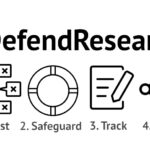By Lilian Nassi-Calò

Photo: Samuel Mann.
This week the eyes of the world are on the Sustainable Development Summit, held on September 25-27 at the United Nations Headquarters in New York, NY. Leaders of the 193 countries of the United Nations (UN) are represented in the decision-making body of the Organization, the General Assembly, in order to adopt the new sustainable development agenda to be reached by 2030 – the Sustainable Development Goals (SDG).
This new agenda is based on the Millennium Declaration established in 2000 with the purpose of reducing extreme poverty and establishing a series of goals – to be reached by 2015 – known as the Millennium Development Goals (MDG). The progress made since their definition indicate that targets work. The year 2015, in which the UN celebrates 70 years of its creation on October 24, offers a historic opportunity for the countries and society to commit to end extreme poverty, promote prosperity and general well-being, protect the environment and tackle climate change. On this subject in particular, the 21st UN Conference on Climate Change (COP 21), to be held later this year in Paris, France, aims to ratify an agreement between the countries on the reduction the greenhouse gas emission.
The UN recognizes science, technology and innovation as fundamental to social and economic development, and as such, its vital contribution to achieving the SDG. It is necessary for scientific research to inform political decisions, and not simply follow them. Thus, it is important to know in detail the current situation of sustainability science1 as a knowledge field that supports and guides sustainable development. Furthermore, by analyzing the scientific production in this area it is possible to obtain indicators of progress of nations towards the SDG, and enable course corrections during the process.
A detailed study2 of academic research in sustainability science was conducted by publisher Elsevier in collaboration with the non-profit initiative SciDev.Net. The study focused on three main aspects: production and impact of sustainability science, collaboration in research in this area and its interdisciplinarity.
The new study field records a relevant and unprecedented scientific output in the last five years, of over 330,000 articles. This volume gets larger context considering the annual output of 2 million articles per year in all areas of knowledge in the bibliographic database Scopus of Elsevier.
The growing number of studies, however, also reveals the size of sustainability challenges that our planet faces today, which are multidimensional, and involve different areas of knowledge. “The academic community contributes to science, which in turn fuels innovation and economic growth, improves health care and benefits society as a whole,” stated Philippe Terheggen, Managing Director of Science, Technology and Medicine Journals at Elsevier.
According to Nick Perkins, director of SciDev.Net, “The success of this new ‘sustainability science’ can finally only be judged by whether there is increased uptake of the research by the policy makers who will be largely responsible for achieving the targets of the new Goals”.
Methodology of the study
The report on Sustainability Science used the bibliographic database Scopus of the multinational publisher Elsevier as research source. The research themes derive from horizontal issues identified by the UN that underlie the 17 Goals for Sustainable Development. There are six themes: Dignity, end poverty and combat inequities. People, ensure healthy living and the inclusion of women and children. Prosperity, building a strong, inclusive and transformative economy. Planet, protect the ecosystem for all societies and for our children. Justice, promote safe and peaceful societies and strong institutions. Partnerships, catalyze global solidarity for sustainable development.
Through the keywords identified in reports by the World Bank, UN and the Intergovernmental Panel on Climate Change (IPCC), a search in Scopus took place. For each of the six themes were identified lists of authors, journals and key institutions. The lists were developed and validated by experts appointed by Scopus-Elsevier. Similarly, the results of the report also went through the scrutiny of experts in each area, and interviews were conducted with relevant stakeholders in order to associate the results of the report to practices and programs. The overall picture obtained in this way contributes to the understanding of sustainability science as a field of knowledge and allows facing the challenges of sustainable development.
Main results
The total world production in sustainability science between 2009 and 2013 is 334,000 articles, representing 3% of total publications in Scopus the same period. The United States leads the ranking with 31.6% of the publications, followed by UK (10.9%), China (9.3%), Germany (6.2%) and Australia (5.5 %). The average annual growth rate of scientific literature in sustainability science is 7.6%. This corresponds to approximately twice the overall growth rate in Scopus, which is 3.9%, indicating that this area of knowledge has attracted the attention and interest of researchers.
This interest is also reflected in the impact of papers on sustainability science. The Elsevier -SciDev.Net study used an impact indicator based on weighted citations per area, considering a five-year window for counting citations. The articles in sustainability science show, in the period 2009-2013, an impact 30% greater than the average of the world articles in all areas. Countries whose publications show greater weighted impact are Switzerland, UK, and USA, and other research strong countries as Australia, Canada, France and Spain. Japan, China and Brazil appear in the least impact position among the 15 countries whose publications on sustainability science are most cited.
Among the cross-cutting issues of sustainability science, Planet leads in weighted citations, with impact index 50% above the average of the world publications in all areas.
Collaboration in sustainability science
Of the areas of knowledge that most benefit from collaboration among researchers, institutions, and countries is sustainability science. Topics covered go beyond legal or physical boundaries and are not restricted to certain populations or regions. Furthermore, it indiscriminately affects developed and developing countries, and connects many areas of science.
Sharing projects and peer reviewed scientific publications is a very common form of cooperation in research and can be used to measure the degree of collaboration between countries. Considering the 15 most productive countries in sustainability sciences, Switzerland, Sweden, Holland, France, Germany and Spain have the highest levels of international collaboration. Furthermore, the degree of cooperation is increasing. In Switzerland, for example, it went from 64.3% in 2009 to 71.6% in 2013.
On the other hand, Brazil, USA and China have the lowest rates of international collaboration between 15 leading countries. Interestingly, these countries have high rates of collaboration within and between national institutions. The collaboration between developed and developing countries is fruitful in this area. One example is from Holland and Kenya; in the period 2009-1013, 24.3% of cooperation between these countries was in sustainability science. Other examples involve the US, UK, Canada and western European nations with African countries. Africa is a continent that has a critical role in Sustainable Development Goals, particularly those related to poverty, education and communicable diseases. Indonesia also appears in partnerships with the US, UK, Netherlands and Australia.
International collaboration seems to positively affect the impact of publications. The average weighted citation impact of Swiss publications in sustainability sciences is 2.35, while the weighted impact of articles resulting from international collaboration is 2.77. The Indian indices are, respectively, below 1 and 1.80 for articles with and without international collaboration. It is possible that articles resulting from international collaboration are more accessible and thus, attract more citations by being exposed to a larger research community.
An important aspect to highlight about the collaboration in sustainability science is cooperation among academic, medical, corporate, and government sectors. Among the main contributors on knowledge in sustainability science is academia, but who uses the information often belong to other sectors. The study of Elsevier-SciDev.Net identified in Scopus the 50 most productive institutions in the area in terms of number of publications belonging to each sector. Many institutions of leading countries in research as US and UK, but also China, Australia and European countries are in the list. These institutions also publish articles with greater impact, above the world average. Partnerships between the most productive sectors involve academia and the government and academia and the medical area, generally within the country.
This study shows the rapid growth of sustainability science in recent years – that records twice the world average growth rate in other areas of knowledge. Both developed countries with strong scientific output, as developing countries conduct research in this area, which is global, highly collaborative in nature, exceeding the average rate collaboration. One of the challenges identified is funding these studies. To proceed with the correct allocation of resources worldwide it would be necessary to know productivity and impact indicators, as well as the level of cooperation at national and international levels and between different sectors. The mapping carried out by Elsevier-SciDev.Net regarding Sustainable Development Goals can help in this regard.
According to Richard Horton, Editor-in-Chief of The Lancet, the study results indicate a high capacity of countries to perform basic research of quality and quantity needed to guide and lead to achieving the SDG goals. “We must recognize (the results) as a strength and something that should be developed, and not lose focus […] decisions about investments in sustainability science are made by the countries themselves and each country needs to know its own strengths.” Horton also highlights a new open access journal launched by The Lancet group named The Lancet Global Health which is expected to stimulate studies to enable achieving the SDG.
To the Director of the Earth Institute and UN Secretary General’s Special Advisor for Sustainable Development Goals Jeffrey D. Sachs, “Sustainable Development is the combination of economic development, social inclusion and environmental sustainability as equivalent pillars… Each one is a community knowledge and it is important to know which one can contribute to addressing a particular challenge, a Sustainable Development Goal.”
Notes
1. Definition: The science of sustainability is to contribute to advance the basic understanding of the dynamics of human-environment systems; facilitate the design, implementation and evaluation of interventions that promote sustainability in places and particular contexts; and improve connections between relevant research and innovation communities and relevant policy management communities. Source: Sustainability Science. Wikipedia. [viewed 27 September 2015]. Available from: http://en.wikipedia.org/wiki/Sustainability_science
2. Sustainability Science in a Global Landscape. Elsevier. 2015. Available from: http://www.elsevier.com/research-intelligence/resource-library/sustainability-2015
References
Elementos Essenciais dos Objetivos de Desenvolvimento Sustentável. In: Synthesis Report of the Secretary-General on the Post-2015 Agenda. United Nations. 2014. Available from: http://www.un.org/disabilities/documents/reports/SG_Synthesis_Report_Road_to_Dignity_by_2030.pdf
Open Working Group proposal for Sustainable Development Goals. Sustainable Development. Available from: http://sustainabledevelopment.un.org/sdgsproposal
Sustainability Science in a Global Landscape. Elsevier. 2015. Available from: http://www.elsevier.com/research-intelligence/resource-library/sustainability-2015
Transformando Nosso Mundo: A Agenda 2030 para o Desenvolvimento Sustentável. Organização das Nações Unidas (ONU). Available from: http://nacoesunidas.org/wp-content/uploads/2015/09/agenda2030-pt-br.pdf
External Links
Elsevier – <https://www.elsevier.com/>
IPCC – <http://www.ipcc.ch/>
ONU – <http://www.un.org/>
SciDev – <http://www.scidev.net/global>
Sustainable Innovation Forum (SIF15) – <http://www.cop21paris.org/>
World Bank – <http://www.worldbank.org/>
 About Lilian Nassi-Calò
About Lilian Nassi-Calò
Lilian Nassi-Calò studied chemistry at Instituto de Química – USP, holds a doctorate in Biochemistry by the same institution and a post-doctorate as an Alexander von Humboldt fellow in Wuerzburg, Germany. After her studies, she was a professor and researcher at IQ-USP. She also worked as an industrial chemist and presently she is Coordinator of Scientific Communication at BIREME/PAHO/WHO and a collaborator of SciELO.
Translated from the original in portuguese by Lilian Nassi-Calò.
Como citar este post [ISO 690/2010]:




![Lack of sustainability plans for preprint services risks their potential to improve science [Originally published in the LSE Impact blog in March/2023] Fotografia de um servidor de rede.](https://blog.scielo.org/en/wp-content/uploads/sites/2/2023/03/taylor-vick-M5tzZtFCOfs-unsplash_thumb.jpg)












Recent Comments